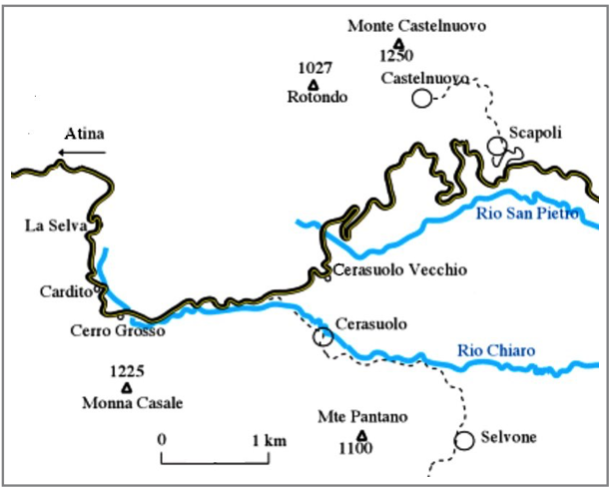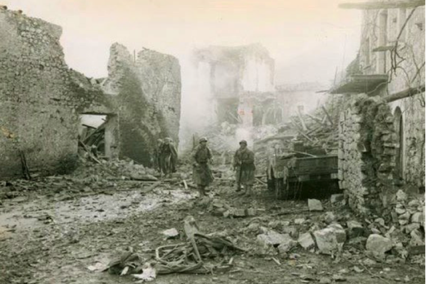
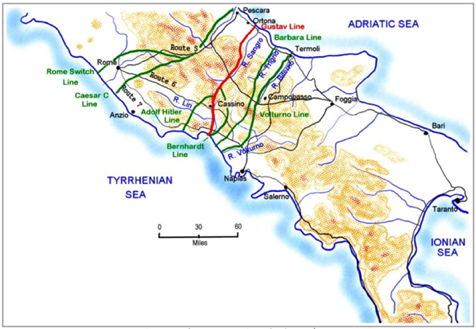
The Gustav Line
1943-1944
The Winter Lines
The initial Allied landings in Italy in September 1943 by two armies commanded by General Sir Harold Alexander, Commander-in-Chief Allied Armies in Italy, was followed by an advance northward on two fronts, one on each side of the central mountain range forming the ‘spine' of Italy. On the western front, the U.S. Fifth Army, commanded by Lieutenant-General Mark W. Clark, moved from the main base of Naples up the Italian ‘boot’. In the East, General Sir Bernard Montgomery's British Eighth Army advanced up the Adriatic coast.
At the beginning of 1944, the western half of the Winter Line was being anchored by Germans holding the Rapido, Liri, and Garigliano valleys and some of the surrounding peaks and ridges. Together, these features formed the Gustav Line - outlined in red on the map below. Montecassino, the historic hilltop abbey, dominated the nearby town of Cassino and the entrances to the Liri and Rapido valleys, but had been left unoccupied by the German defenders. The Germans had, however, manned some positions set into the steep slopes below the Abbey's walls.
On the western side of the Apennines there were two subsidiary lines; the Bernhardt Line in front of the main Gustav positions and the Hitler Line some five miles to the rear. Cerasuolo lay right in the middle between the Bernhardt and Gustav lines. The winter line was fortified with gun pits, concrete bunkers, turreted machine-gun emplacements, barbed-wire and minefields. It was the strongest of the German defensive lines south of Rome. Some 15 German divisions were employed in the defence. It took the Allies from mid-November 1943 to late May 1944 to fight through all the various elements of the Winter Line, including the well-known battles at Montecassino and Anzio.
Military Activity
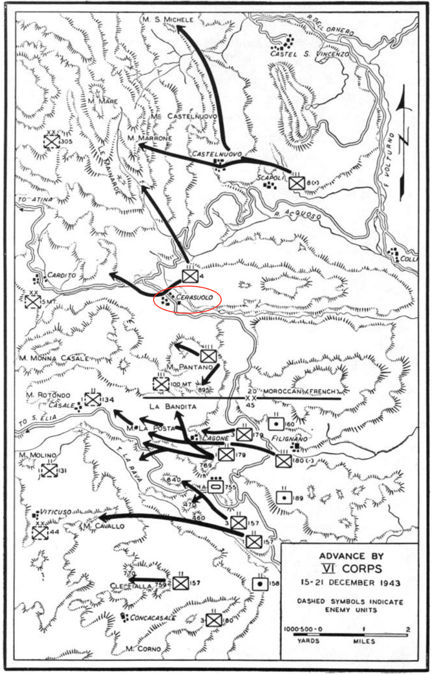
During the Second World War, there was a significant offensive by a division of the American Fifth army in the vicinity of Cerasuolo.
Most of the action occurred between 29th November and 9th December 1943 by the 100th Battalion/442nd Regimental Combat Team.
This force had a high percentage of Japanese Americans and one of their major campaigns was the battle at Montecassino.
The German army front line lay north south in a line that ran from west of Venafro, Pozzilli and Filignano, just east of Cerasuolo and west of Castelnuovo.
The German forces lay to the west of this line i.e. on the Cassino side so Cerasuolo was effectively in ‘enemy’ territory.
Allied Bombardment
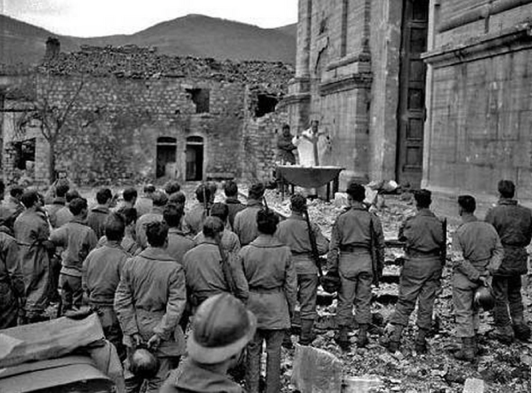
These two photographs show the impact of the allied bombardment at the end of 1943 on the church building at Cerasuolo.
The soldiers in the pictures are French men of the 2nd Moroccan Infantry Division, French Expeditionary Corps. It has specific interest as it depicts the state of the village during the war. It is also sad to relate that many local villagers suffered at the hands of the Moroccan Infantry as they ransacked what was left of houses and attacked local women.

The second photograph shows US soldiers amidst the smouldering debris on a street in Cerasuolo in mid-January 1944; it had been bombed and strafed by German planes just a few minutes earlier.
